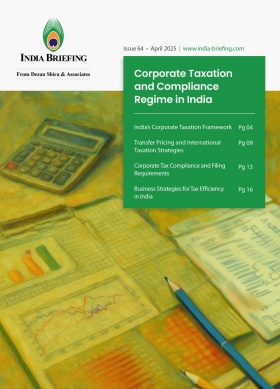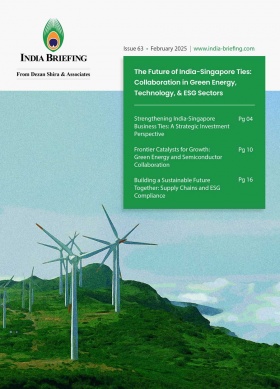Trade War Economics: India’s Moment in the US’s Tariff Strategy
Amid shifting US tariff policies, India is gaining a trade edge over global competitors like China and Canada. NITI Aayog’s latest report highlights strong export growth to the US. While this opens key opportunities, experts urge caution against rushed trade deals that could compromise long-term interests.
India’s strategic position in the global trading system is evolving in response to recent shifts in international tariff structures, particularly those implemented by the US. As per NITI Aayog’s July 2025 report, India has gained an edge in 22 key export sectors amid US tariff shifts. According to the Trade Watch Quarterly report for Q3 FY 2025-26, released by NITI Aayog on July 14, 2025, India is positioned to gain a competitive advantage over key rivals such as China, Canada, and Mexico due to favorable tariff differentials across several critical sectors.
Trade experts, however, advise India to avoid rushed trade agreements that could undermine long-term interests.
India’s edge in export markets amid tariffs
The report finds that under the current US tariff framework, India is likely to gain a competitive edge in 22 of the top 30 Harmonized System-2 (HS-2) product categories it exports to the US. These segments account for 61 percent of India’s total exports to the US and correspond to 68 percent of total US imports in those categories. This presents an opportunity for Indian exporters to expand their market presence in the US.
The HS-2 refers to broad product categories used in international trade classification.
Conversely, in the six remaining top categories where India faces slightly higher tariffs, the average disadvantage is limited to just 1 percent, keeping India broadly competitive in those areas as well.
High-value and labour-intensive sectors set to benefit
India’s relative advantage spans both high-value industries, such as nuclear equipment, electronics, and vehicles, as well as labor-intensive sectors, including apparel, textiles, and pharmaceuticals. These gains are driven by increased tariff burdens on competing exporters like China, Canada, and Mexico, which provide Indian manufacturers with a potential pricing edge in the American market.
|
US Reciprocal Tariff Rates |
||
|
Trading partner |
July 2025 announced rate |
April 2, 2025, announced rate |
|
Bangladesh |
35% |
37% |
|
Brazil |
50% |
10% |
|
Brunei |
25% |
24% |
|
China |
55% |
34% |
|
Canada |
35% |
– |
|
European Union (EU) |
30% |
20% |
|
India |
– |
|
|
Indonesia |
32% |
32% |
|
Japan |
25% |
24% |
|
Kazakhstan |
25% |
27% |
|
Malaysia |
25% |
24% |
|
Mexico |
– |
25% |
|
Moldova |
25% |
31% |
|
Myanmar |
40% |
44% |
|
Philippines |
20% |
17% |
|
South Korea |
25% |
25% |
|
South Africa |
30% |
30% |
|
Tunisia |
25% |
28% |
|
Vietnam |
20% |
46% |
Source: The White House
The report’s findings are based on the US applying a 10 percent baseline tariff on imports from all trading partners, except Mexico and Canada. However, on July 13, 2025, Trump announced that Mexico now faces a 30 percent tariff, and Canada’s imports are subject to a 35 percent duty. Chinese goods have been hit with an additional 30 percent tariff, dramatically altering the competitive landscape in favor of India.
Trade uncertainty looms over India-US negotiations
Despite these opportunities, the trade environment remains in flux. As of July 10, 2025, the US has temporarily suspended reciprocal tariffs on Indian goods, which would otherwise total 26 percent (including the 10 percent base tariff). This suspension is in effect until August 1, 2025. Should an interim trade agreement between India and the US not materialize by then, Washington may reinstate these tariffs, affecting India’s current advantage.
The outlook for other US trade partners also remains uncertain and will largely depend on the outcomes of their ongoing bilateral negotiations.
Policy priorities for India amid trade talks
To fully leverage this shifting trade landscape, the report urges Indian policymakers to adopt a forward-looking and flexible trade strategy. Some of the key recommendations mentioned in the report are as follows:
- Focused export support for India’s strategic sectors
- Deepening domestic sectoral integration with global value chains
- Accelerating bilateral negotiations on digital trade and services
- Establishing robust institutional frameworks for cross-border data flows and mutual recognition agreements
The report anticipates that these measures can help solidify India’s role as a reliable trade partner and enhance its global trade footprint.
Amid tariff tensions, the US emerges as India’s top export destination in Q1 FY 2025–26
During the first quarter of FY 2025–26 (April to June), India’s trade relationship with the US continues to strengthen, positioning the latter as a key partner in both exports and imports. As per the data released by the Union Ministry of Commerce & Industry on July 15, 2025, the US emerged as the leading export destination for India during this period. India’s exports to the US grew by 22.18 percent in April–June 2025 compared to the same quarter in 2024, with a sharp 23.53 percent year-on-year rise recorded in June 2025 alone.
India’s export uptick with the US comes at a time when the two countries are negotiating for a trade pact.
On the import side, the US also featured among India’s top five sources. Imports from the US rose by 11.68 percent during April–June 2025 compared to the corresponding period in 2024. Overall, the Q1 trade data reflects the US’s central role in India’s external trade strategy.
India’s overall exports—comprising merchandise and services—stood at US$210.31 billion, reflecting a 5.94 percent year-on-year increase from US$198.52 billion in Q1 FY 2024–25. Merchandise exports alone reached US$112.17 billion, up 1.92 percent from 2024.
Trade experts’ advisory: Avoiding high-risk, one-sided deals
In a separate report, the Global Trade Research Initiative (GTRI) cautions India against rushing into trade agreements that could compromise core economic sectors, especially agriculture. The trade agency emphasizes that India should resist diplomatic pressure—particularly from the US—to conclude deals that may have unfavorable long-term consequences, especially in a politically volatile global landscape.
The report warns that any agreement made under duress could be short-lived and potentially reversed with changes in US political leadership. GTRI stresses the importance of preserving domestic interests over short-term trade appeasements.
It also notes that the US’s aggressive push for trade deals—termed MASALA deals (Mutually Agreed Settlements Achieved through Leveraged Arm-twisting)—has had limited success. So far, only Vietnam and the United Kingdom (UK) have agreed to US demands, while others like Japan, South Korea, the EU, and Australia have resisted.
These deals often require partner countries to reduce tariffs and commit to minimum US goods purchases, without reciprocal benefits. Moreover, the US retains the discretion to impose further tariffs at will, creating an environment of unpredictability for trade partners.
In response to global resistance, the US has adopted punitive trade measures. On July 7, the White House administration imposed 25 percent tariffs on Japanese and South Korean imports, followed by threats of 30 percent tariffs on EU and Mexican products as of July 12, despite ongoing negotiations.
ALSO READ: India Must Avoid Trade Shortcuts Amid US-China Tariff Tensions: GTRI
India not alone in facing trade pressures
The US is currently negotiating with over 20 countries and has demanded concessions from more than 90 nations. GTRI has made a note that a growing number of stakeholders recognize that such politically driven trade arrangements offer little predictability and limited long-term benefit.
India, the report concludes, should maintain its strategic focus, safeguard vital sectors, and pursue trade policies that support resilience, competitiveness, and long-term development.
Conclusion
The evolving US tariff policy offers India a rare chance to enhance its export competitiveness in a key market. However, this opportunity must be balanced with careful negotiation and policy discipline. With thoughtful engagement and agile policymaking, India can cement its role as a preferred global trade partner while also safeguarding its economic sovereignty against short-term geopolitical pressures.
About Us
India Briefing is one of five regional publications under the Asia Briefing brand. It is supported by Dezan Shira & Associates, a pan-Asia, multi-disciplinary professional services firm that assists foreign investors throughout Asia, including through offices in Delhi, Mumbai, and Bengaluru in India. Dezan Shira & Associates also maintains offices or has alliance partners assisting foreign investors in China, Hong Kong SAR, Vietnam, Indonesia, Singapore, Malaysia, Mongolia, Dubai (UAE), Japan, South Korea, Nepal, The Philippines, Sri Lanka, Thailand, Italy, Germany, Bangladesh, Australia, United States, and United Kingdom and Ireland.
For a complimentary subscription to India Briefing’s content products, please click here. For support with establishing a business in India or for assistance in analyzing and entering markets, please contact the firm at india@dezshira.com or visit our website at www.dezshira.com.
- Previous Article Apple’s Contract Manufacturers and Component Suppliers in India
- Next Article India’s New Income Tax Bill 2025: An Overview







